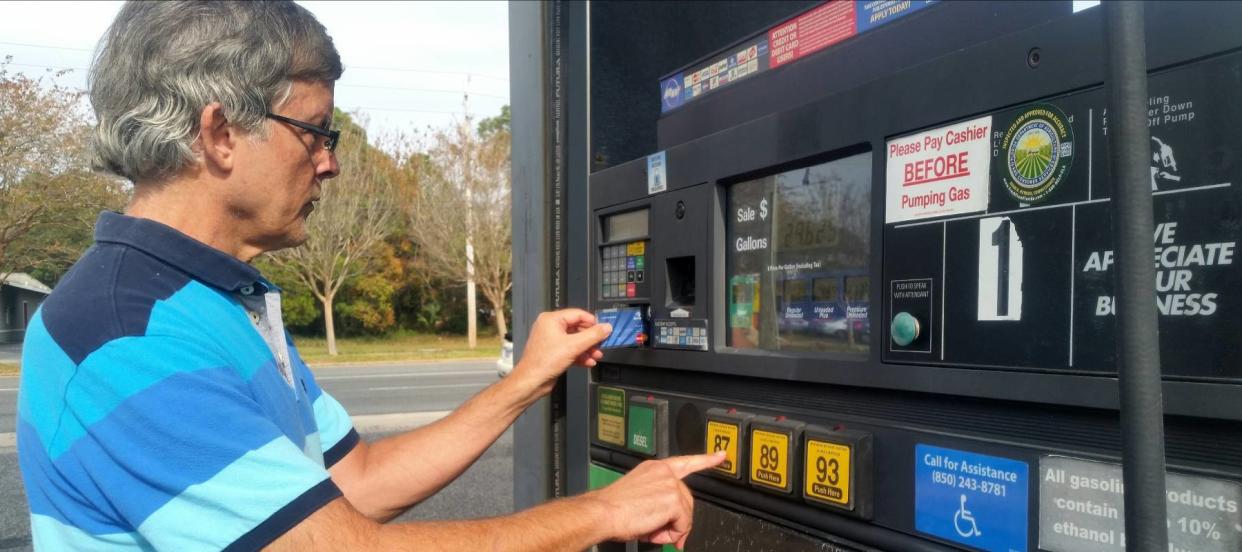Sky-high gas prices have been a crude awakening for drivers — these tips could cut your costs by 20%

As gas prices continue to soar, hitting a record average of $5.016 a gallon in mid-June, many drivers may feel like they’re passengers, buckled in against their will for a bumpy ride.
But while the cost of fuel isn’t likely to decelerate for a while, there are tangible things drivers can do to wrestle back a little control over what they pay at the pump.
Here’s what to expect when filling up for the rest of the year, and how you can lessen its impact on your wallet.
Don’t miss
Your cash is trash: Here are 4 simple ways to protect your money against white-hot inflation (without being a stock market genius).
Too many Americans are still missing out on cheaper car insurance
If you owe $25K+ in student loans, there are ways to pay them off faster
Analysts say high prices are here to stay
There are several factors at play contributing to the soaring gas prices consumers are seeing, says Patrick De Haan, petroleum analyst for GasBuddy in Chicago, Ill.
When everything shut down in the early days of the pandemic, demand for gas dropped, so suppliers cut back on production. But with the introduction of vaccines, Americans were ready to get back on the road. Unfortunately, by then, the supply wasn’t there.
“There have been a lot of imbalances created by the pandemic,” says De Haan. “And oil and energy is one of those.”
On top of that, supply chain issues and Russia’s war in Ukraine mean prices are unlikely to level off even once producers catch up.
“I think elevated prices will stick around until one of two things happens: either Russia fully exits Ukraine, and potentially we see a regime change. Or, we see oil supply start increasing … to offset that Russian production,” says De Haan. “It's all about how much supply is available.”
De Haan notes prices have recently dropped from their mid-June highs — but a return to normalcy “may take some time.”
How much time? “I don't see us getting back to norms for potentially a year or two, maybe three,” says De Haan. “Oil is cyclical, and high prices will eventually lead to lower prices, which will eventually lead to higher prices. There's never a perfect balance.”
Americans are watching prices creep with concern
The idea of dealing with high gas prices for years to come may send some into a tailspin.
In a poll conducted by Gallup this spring, 52% of respondents said gas prices were causing financial hardship for their household. And for lower income households, that number rises to 70% facing severe or moderate hardship due to prices at the pump.
Gas prices and the general rising costs associated with inflation even have some Americans reconsidering their summer plans. According to a survey from ValuePenguin, 60% have changed their vacation plans because of rising costs, while 15% say they’re opting for a different mode of transportation than driving because of gas prices.
President Biden has been urging Congress to pass legislation introducing a gas tax holiday, but experts aren’t convinced it’ll offer much relief for consumers.
“Will it help consumers? Yes, it will. How much? Well, with today's national average, we're talking about saving them about 3.5%,” says De Haan. “Do people get excited about a 3.5% off coupon? Well, I don't, but it is some measure of relief.”
Practical ways to cut down your costs
The best way to avoid high gas prices is to cut back on your driving. Consider making some trips by public transit, by bicycle or on foot, especially if you live in an urban area.
But for a good percentage of Americans, driving less may not be realistic, especially if prices stay high as long as De Haan anticipates.
Fortunately, AAA offers simple tips on its website to help drivers get more mileage out of each tank.
They include accelerating gently; avoiding speeding or idling; decreasing drag by removing roof or bike racks when they’re not needed; and keeping up with your regular car maintenance.
While those may not seem like dramatic changes that will impact your gas consumption, Kristine D’Arbelles, the senior director of public affairs for the Canadian Automobile Association (CAA) in Ottawa, Canada, says in combination, they could save drivers up to 20 per cent on fuel in a year.
“On average, if someone spends about $2,000 on gas, if you're saving 20 per cent … that’s a pretty penny.”
Take, for example, avoiding high speeds. AAA reports that especially on the highway, speeds over 50 mph cause more aerodynamic drag, which translates into a significant drop in fuel economy.
According to the U.S. Department of Energy, a good rule of thumb is to assume that for every 5 mph you drive over 50 mph, every gallon of gas you put in your tank will cost you an extra $0.35.
With these tips in hand, drivers can hopefully weather surges at the pump until supply can catch up with demand.
“We may be stuck in this higher price era for a little while,” says De Haan. “I do think we will eventually settle back down. But when we do settle down ... it's still going to be fairly uncomfortable.”
What to read next
Get the latest personal finance news sent straight to your inbox with the MoneyWise newsletter.
A TikToker paid off $17,000 in credit card debt by 'cash stuffing' — can it work for you?
Biden's gas tax holiday might save you $6 a month, fueling calls for inflation stimulus checks instead
This article provides information only and should not be construed as advice. It is provided without warranty of any kind.

 Yahoo News
Yahoo News 
